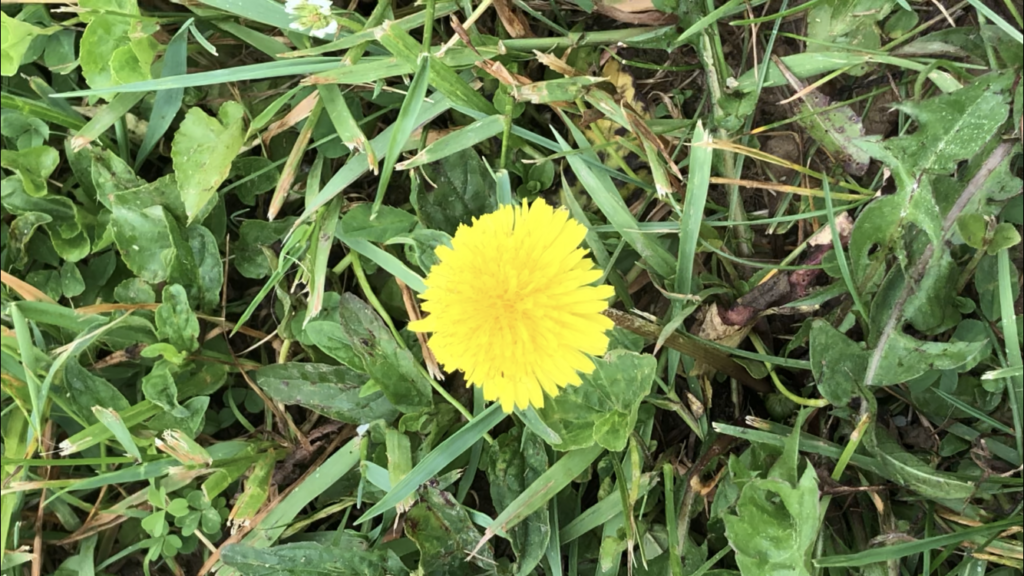Dandelions: nuisance or nourishment? For many, the sight of bright yellow dandelions is infuriating. Persistent and pesky, dandelions are extremely common and generally hated by gardeners, despite their vibrant yellow color. They aren’t toxic to other plants or people, but dandelions are difficult to contain as the seeds are easily spread by the wind. As a child, I observed my grandpa’s prolonged war against the dandelions. On the battlefield of his back yard, he mowed and pulled dandelions with vigor. Like most kids, I thought the tiny pops of yellow were pretty, but he would not permit weeds to tarnish his lawn. Although their classification as weeds makes them seem at least useless if not detrimental, dandelions are edible. Perhaps, rather than viewing the dandelions as worthless or invasive, they could be looked at as a source of food like many other plants.
I’m beginning a series dedicated to finding purpose in the plants we call weeds. I hope this series makes you question why some plants are considered desirable and others not, and whether that designation rings true for you. To start off this series, I’m making fried dandelions.
Last Sunday morning, I went on a run and picked dandelions along the path as I cooled down. By the time I was ready to cook the dandelions, some of the flowers had closed up while others remained fluffy and open. Initially, I worried that the closed up flowers would ruin the recipe; however, I ended up liking the variety of textures. I’m hesitant to even call this a recipe because the process was so simple.
To start, I rinsed the dandelions and chopped off the stems. Then, I dunked the dandelion buds in an egg wash and coated them in flour. Next, I placed them in hot vegetable oil on a medium pan. Because the flowers are tiny, I didn’t need too much oil, and I kept the stove at a lower temperature than I would typically use to fry something. After allowing all sides to brown, I put them on a paper-towel covered plate. Finally, I sprinkled on some salt and pepper. You could customize this step with any spices you like or perhaps with a dip or sauce.

I didn’t know what to expect fried dandelions to taste like, but they were delicious. They tasted a little like popcorn—bite-sized and salty with some variety in shape and texture. Fried dandelions are just one example of how dandelions can consumed. Dandelions are beginning to garner some appreciation through events like the WV Dandelion Festival and the growing recognition of their uses in the kitchen. While looking into the subject, I came across recipes and articles about dandelion tea, dandelion wine, medicine benefits of dandelions, and more. What weeds should I cook next?


I really enjoyed this article. It’s a very good read and I liked your personal touches to it, about your Grandfather fighting the dendelions. I never knew you could eat them, so thank you for the guide to making them. I’m interested in learning more about what weeds you can eat and what they taste like.
I found this article extremely interesting because I never knew that you could eat a dandelion. To me a dandelion is a flower you just admire and take pictures not something that would be edible. I was intrigued on how they prepared the dandelion as something edible and it almost makes me want to try it.
The idea of eating dandelions is quite interesting. I understand it is a waste to just pluck them and toss them, and I think it’s an intriguing thought to eat them. I look forward to learning more about weeds we can eat!
I’ve always known Dandelions were edible but I’ve never given much thought on the preparation that would go into making them. Once the weather his nicer and Dandelions start popping up I am certainly going to have to try this out. I’ve been vegan for about 7 months now so I’m always looking to try new things. I’ll have to modify the recipe a bit since it includes egg but the final dish looks amazing. I’m sorry to see this series didn’t end up being continued as its such an awesome idea!